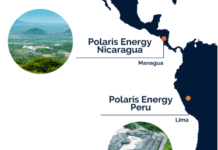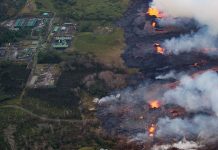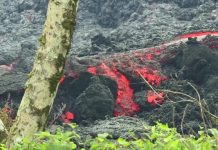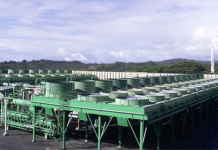Meg Cichon
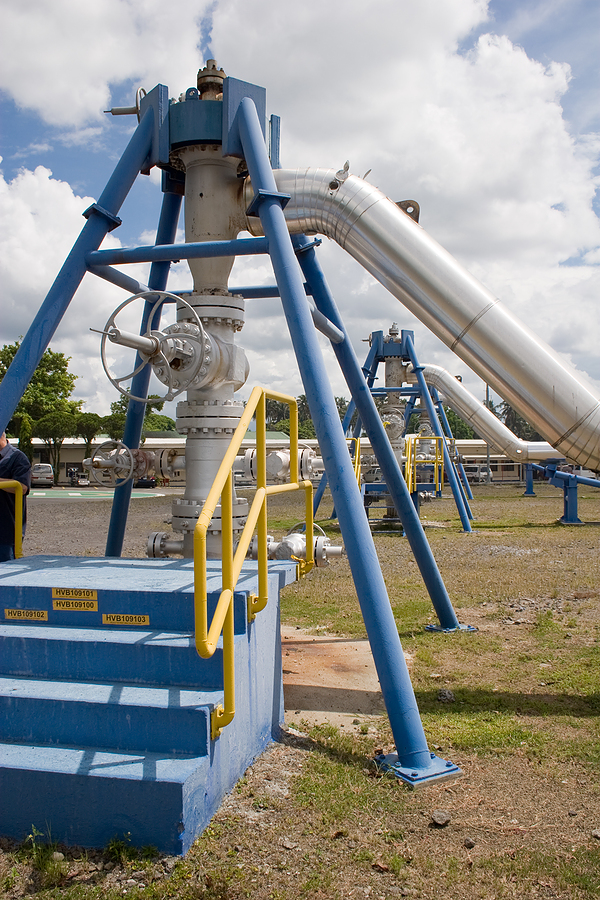 |
| Geothermal well photo via Bigstock |
With climate threats and increased energy demand, South American countries are set to develop their vast geothermal potential. Will developers be able to acquire investment and favorable policy?
If any part of the world should be concerned about the effects of climate change, it is South America. Despite contributing some of the lowest emissions globally, many of the countries in the region are
As South America’s population is expected to rise 72% by 2035, the impact of climate change grows more significant each day. Governments are reacting with renewable energy development and geothermal power has several major prospects.
Burgeoning Potential
South America has largely relied on hydropower, but its capacity is weakening. Though many regions have further untapped potential, most is located in remote regions with limited access to the grid, according to Meeting the Electricity Supply/Demand Balance in Latin America & the Caribbean, a report released by the Energy Sector Management Assistance Program (ESMAP).
Geothermal presents a major opportunity throughout South America, but exploratory drilling has been limited. According to the ESMAP report, the range of geothermal capacity estimates is quite broad. Though expectations may be uncertain, many regions are hopeful that exploration will reveal something more.
‘Extrapolating from the experience in the US, where there has been a large amount of exploratory drilling, the potential of conventional geothermal resources in Latin America might be as much as 300 TWh per year,’ the report states.
The most viable resources are thought to be located along the Pacific Rim, which ranges from Mexico to Chile. Key spots in the Caribbean islands also carry some potential, according to researchers.
Policy Push
Several South American countries have spearheaded policy incentives to move renewable energy plans forward. Countries of note include Argentina, Chile and Peru, according to the 2012 Geothermal International Market Overview Report released by the Geothermal Energy Association (GEA).
Argentina implemented a feed-in tariff (FiT) plan for geothermal projects, with a 15-year entitlement period after the plant is brought online. The plan also includes a goal to reach 8% of renewable production by 2016.
According to the GEA, ‘Though a 1998 law supported wind and solar generation, geothermal did not become eligible as a renewable energy source until 2007. … In May 2009, the Genren Program was launched, aiming to purchase and incorporate 1000 MW from renewable energy plants, 30 MW of which is to come from geothermal energy.’
With geothermal potential of up to 16,000 MW, the Chilean government is ready to take advantage of its untapped renewable sources. To drive renewable development, the Chilean National Energy Commission partnered with the US Department of Energy (DOE) to create the Renewable Energy Center in Chile. According to its website, the DOE uses the facility to compile global renewable energy best practices and techniques to then use in the region.
‘The Chilean center will serve as a clearinghouse of information and analytic tools and a leading source of expertise on renewable energy technologies and policies for Chile and, once it is up and running, for the region. It will also help research, develop and promote non-conventional renewable energy projects, and will serve as a source of information for investors and policymakers.’
Chile’s non-conventional renewable energy law enforces all utilities with a total capacity of 200 MW and greater to demonstrate that at least 10% of their energy comes from renewable sources. After 2014, this enforcement will increase by 0.5% annually until 2024, when it finally reaches 10%, according to the GEA report. Chile also enforces its law of geothermal concessions, established in 2000, which regulates exploration and permitting of geothermal projects. In response to this favorable policy, a total of 83 geothermal exploration concession requests are under review as of June 2012 at Chile’s energy ministry, according to Business News Americas.
Peru is thought to have nearly 3000 MW of geothermal potential, none of which has been exploited. The country currently draws most of its energy from natural gas, hydropower and fossil fuels. Recognizing its need for energy development, the Peruvian government has set FiTs and tax incentives for renewables. It has also held auctions for contracts, including a recent 500 MW tender. Its goal is to generate 5% of its electricity from renewables by 2014.
Other South American countries have also recognized the need for clean energy and have implemented favorable policies. According to the International Energy Agency (IEA), Bolivia began its efforts in 1999 with grant incentives for rural renewable projects, and in 2000 passed a rural electrification project. In 2005, Bolivia passed the Rural Electrification Decree that promotes collaboration between private energy companies and government agencies to establish renewable projects.
Where is the Investment?
Though much investment has come from private funding, the Inter-American Development Bank has been a key player in South America. It has a five-year target to invest 25% of its loans toward climate-related projects, and it recently established the Emerging Energy Latin America Fund II.
According to its website, ‘IDB’s participation will consist of a senior A loan of up to US$30 million with a tenor consistent with the life of the fund (expected at 10 years), including a five-year commitment period. The repayment structure and the scope of security will be defined during due-diligence.’
The fund, a successor of the $25.2 million CleanTech Fund, is expected to reach $150 million. According to Andres Ackerman, an IDB project team leader, the fund was created due to major expected energy demand increases in the region 75% by 2030 half of which could be generated by renewables.
‘This financing is part of the IDB’s commitment to develop mechanisms to support long-term funding of renewable energy and clean technology projects in the region, which stimulate innovation, job creation and green economic growth,’ said Daniela Carrera-Marquis, head of the financial markets division at the IDB’s structured and corporate finance department (SCF).
Race To Be the First
Though there are no plants currently online in South America, several projects are nearing completion. Argentina could technically claim groundbreaking fame with its demonstration project built in 1988 in the volcanic Copahue region a site that has been explored for geothermal development since the 1970s. Decommissioned in 1996 due largely to high electricity pric
es, the 670 kW project used 171°C sources at depths of 800 to 1200 meters.
Near the decommissioned demonstration plant is a new potential frontrunner the 30 MW Copahue project in development by Earth Heat Resources. According to the company, the project has the potential for massive expansion after the success of the initial 30 MW plan. Now in its second phase of development, the project is expected to be completed this year.
‘This second stage study will encompass many elements of the upcoming program for this year including drilling, civil works, other facilities, engineering and transmission line issues,’ said Earth Heat Resources managing director Torey Marshall. ‘This milestone will confirm the location of wells, location of roads, location of potential plant sites and transmission line locations; an enormous step in our development of the Copahue Project.’
Earth Heat Resources recently signed a power purchase agreement (PPA) with Electrometalurgica Andina SAIC for an initial 30 MW per year. It has also signed a letter of intent with Xtrata Pachon SA to purchase 50 MW per year, with the potential for further expansion. Xtrata sees the potential in geothermal and is eager to get involved with sustainable, renewable projects in Argentina.
‘We are committed to finding the best environmental, social and economic solutions in support of our potential future investments in Argentina, and look forward to working with Earth Heat in the first geothermal plant in the country,’ said Xavier Ochoa, Pachon’s general manager.
Fast on its heels is Enel (ENLAY.PK) Green Power’s Cerro Pabellón geothermal project located in Pampa Apacheta, Chile. With eight geothermal concessions in Chile the most recent acquisitions include Colorado, San Jose I, and Yeguas Muertas Enel is eager to tap the nation’s vast potential. The 50 MW project recently received environmental approval and is ready to move forward.
‘The country’s geothermal potential is one third of the installed geothermal capacity worldwide,’ explained Enel Green Power CEO Christian Herrera. ‘Electricity generation through geothermal energy not only helps meet the growing energy demand in the country, helping to reduce dependence on imported fuels, but [it’s] also a concrete contribution to reducing greenhouse gas emissions, contributing to the mitigation of global warming.’
In development but further from completion, renewable energy firm GGE Chile submitted an environmental impact assessment (EIA) for a $330 million geothermal project planned for its San Gregorio concession in southern Chile. Expected to break ground in 2013, the 70 MW Curacautin geothermal project will consist of 10 drilling platforms, 14 production wells and 11 reinjection wells, and is scheduled to come online in 2016, according to Business News Americas.
The nearby Mariposa Geothermal System owned by Alterra Power Corp (AXY.TO, MGMXF.PK) is located near an active volcanic region in the Chilean Andes Mountains. Exploration for the project began in the early 2000s, when great potential was found in the area. According to the project website, based on the exploration results, the inferred resource estimate is 320 MW available over 30 years. To date, slim holes have been drilled, and 200+°C resources have been found at the top of the wells; additional holes will be drilled to determine further resources. A 50 MW plant is in development and expected to be completed by 2016, and Alterra is searching for partnerships to continue exploration and development at the Mariposa site.
A key factor to this project is the nearby hydropower projects. Developers are hopeful for a collaborative effort to build transmission systems to feed the renewable resources to the Central Power Grid.
Northern Influence
Facing many of the same issues with climate change and population growth, Central America and the Caribbean have embraced their geothermal resources much more than their southern neighbors. According to the GEA report, a majority of the countries in Central America have developed a portion of their geothermal resources.
‘El Salvador and Costa Rica derive 24% (204 MW) and 12% (163 MW) of their electricity production from geothermal energy respectively. Nicaragua (87 MW) and Guatemala (49.5 MW) also generate a portion of their electricity from geothermal energy,’ said the GEA’s report.
The potential for further development of Central America’s geothermal resources remains significant, and the geothermal potential of the region has been estimated between 3000 MW and 13,000 MW at 50 identified geothermal sites.
The SIEPAC (Sistema de Interconexion Electrica para America Central) transmission interconnection has greatly influenced this region’s geothermal development. In an effort to reduce electricity costs, countries are able to develop their geothermal sources and spread the renewable wealth throughout the region at competitive prices.
Electricity costs have influenced geothermal growth on the Caribbean islands. Compared with current fossil fuel production at $0.24/kWh, geothermal costs $0.05/kWh, according to the World Bank.
In sharp contrast, South America has strayed from transmission interconnections. According to the GEA report, there have been recent issues regarding the flow of energy across national borders, which have led to underdeveloped, rarely used and cut transmission lines. This dissension has resulted in increased blackouts and worker strikes. Though this may have held back development, the current climate crisis and the increased need for clean energy have spurred a government response to develop the massive geothermal resources throughout the region.
According to Geothermal Resources in Latin America and the Caribbean, a report released by Sandia National Labs and the US DOE, ‘With [gigawatts] of estimated power potential, geothermal energy can and should supply a portion of the additional capacity required [in Latin America].’
Meg Cichon is an Associate Editor at RenewableEnergyWorld.com, where she coordinates and edits feature stories, contributed articles, news stories, opinion pieces and blogs. She also researches and writes content for RenewableEnergyWorld.com and REW magazine, and manages REW.com social media. Formerly, she was an Associate Editor of ideaLaunch in Boston, MA. She holds a BA in English from the University of Massachusetts and a certificate in Professional Communications: Writing from Emerson College.

